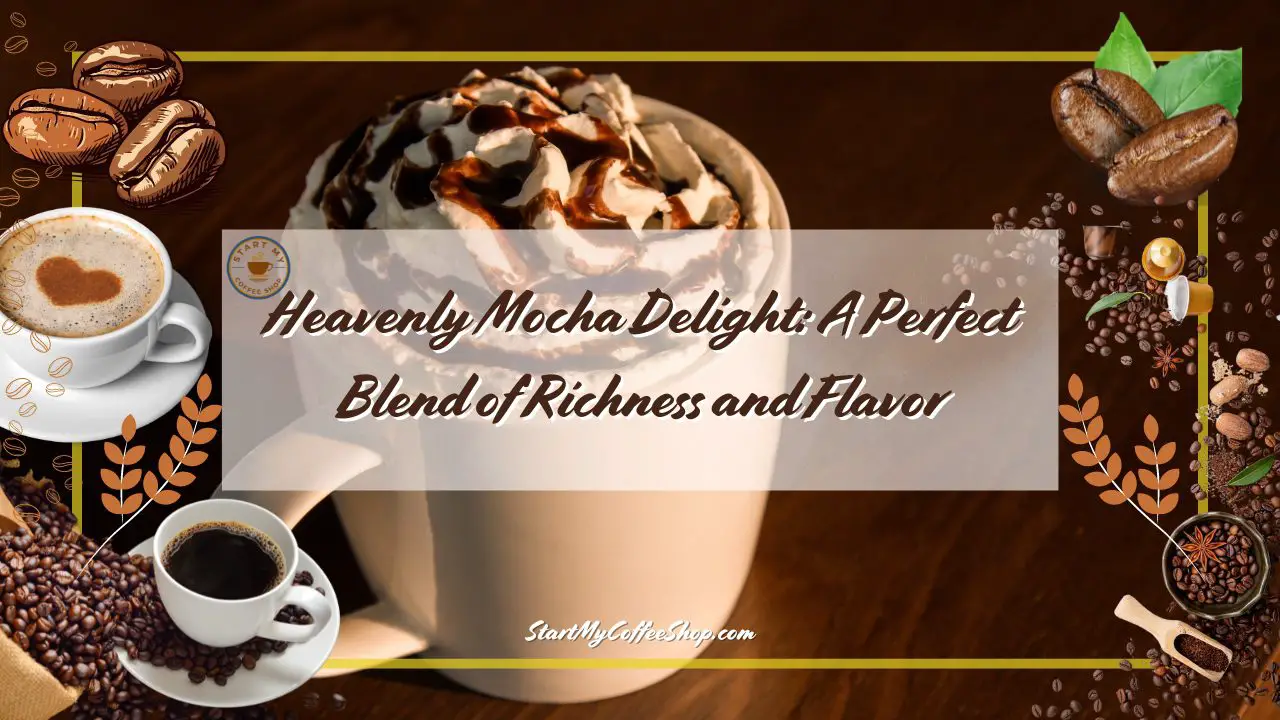Coffee, that magical elixir that fuels our mornings and keeps us going throughout the day, has a captivating secret – its roasting process. From the delicate light roasts to the robust dark ones, each type offers a unique flavor profile that entices coffee enthusiasts worldwide.
Coffee roasts range from light to dark. Light roasts have a milder flavor, highlighting the bean’s unique origin and acidity. Medium roasts offer a balance between flavor and roast, while dark roasts have a bolder, smoky taste, often masking the bean’s origin with rich caramelized notes.
In this article, we embark on a journey to explore the diverse world of coffee roasts, unlocking their distinct characteristics, flavors, and the art behind their creation.
 Light Roasts: Unveiling the Origin’s Essence
Light Roasts: Unveiling the Origin’s Essence
In the world of coffee, light roasts are revered for their ability to capture the essence of the coffee bean’s origin like no other. Roasted to a delicate golden hue, these beans are a testament to the art of preserving natural flavors. As you take that first sip of a well-brewed light roast, you embark on a sensory adventure that reveals the intricate characteristics of the coffee’s birthplace.
With each delightful sip, your taste buds are greeted by a symphony of vibrant acidity, reminiscent of the fertile soil and ideal growing conditions in which the coffee cherries ripened. The brightness that accompanies this roast level dances across your palate, awakening your senses and offering a refreshing experience akin to a gentle morning breeze.
Beyond the invigorating acidity, light roasts have a penchant for revealing the coffee’s floral undertones. Much like a bouquet of freshly bloomed flowers, these delicate notes add a touch of elegance to your cup, enhancing the overall drinking experience. The floral nuances pay homage to the careful cultivation and harvesting of the coffee cherries, and the skilled roasting process that coaxes them to the surface.
For those who seek a coffee with a softer, more fruit-forward profile, light roasts are the perfect match. The delicate roasting allows the coffee’s inherent fruitiness to shine through, delivering a captivating medley of flavors that can range from zesty citrus to sweet berries and tropical fruits. It’s a delightful journey through the unique terroir of the coffee’s origin, allowing you to savor the distinct flavors that define the region.
Moreover, light roasts often feature a lighter body, contributing to their refreshing and easy-to-sip nature. This characteristic makes them an excellent choice for those who prefer a lighter and more nuanced cup of coffee, free from the deeper caramelization associated with darker roasts.
 Medium Roasts: Striking the Balance
Medium Roasts: Striking the Balance
As we ascend the roasting ladder, we enter the enchanting realm of medium roasts, where the artistry of roasting is at its most harmonious. Nestled perfectly between the vibrant light roasts and the robust dark roasts, medium roasts strike an impeccable balance between preserving the coffee bean’s original flavors and enhancing them through the roasting process.
At the core of the medium roast experience lies its ability to offer a more pronounced body compared to lighter roasts. As the beans undergo slightly more roasting time, they develop a deeper richness, which adds a velvety smoothness to the mouthfeel. This added depth creates a comforting and satisfying sensation that captivates coffee enthusiasts worldwide.
Simultaneously, medium roasts exhibit a gentle reduction in acidity compared to their lighter counterparts. This shift allows the coffee’s nuanced flavors to shine through with clarity. The subtle acidity, while present, takes a step back, allowing other delightful notes to take center stage.
In each cup of a well-crafted medium roast, coffee aficionados can uncover a delightful blend of fruitiness and caramel-like sweetness. The inherent fruit-forward nature of the beans becomes more apparent, offering a diverse range of fruity flavors. From the tangy sweetness of ripe berries to the lusciousness of stone fruits, every sip is a delightful surprise.
The caramel-like sweetness, a result of the Maillard reaction during roasting, lends a touch of richness to the coffee’s flavor profile. This gentle sweetness complements the fruitiness and adds depth to the cup, creating a balanced and complex taste that keeps you coming back for more.
Medium roasts’ versatility is a hallmark of their popularity among coffee drinkers. They cater to a wide range of preferences, making them an approachable choice for both seasoned coffee connoisseurs and newcomers alike. Whether enjoyed as a comforting morning pick-me-up or a leisurely afternoon brew, medium roasts effortlessly adapt to any occasion.
Dark Roasts: Embracing Boldness and Depth

As our roasting journey delves deeper into the spectrum, the enchanting allure of dark roasts unveils itself in all its mesmerizing splendor. These coffee beans undergo a transformative process, turning into deep, dark brown gems with an alluring ebony sheen. Dark roasts are the epitome of boldness, delivering an intense flavor profile that leaves an indelible mark on the palate.
What sets dark roasts apart is their distinctive bittersweet notes, which are a result of the expert roaster’s careful touch during the roasting process. The beans undergo a longer and more intense roasting period, leading to a greater breakdown of sugars and the development of complex flavors. These bold flavors evoke the richness of dark chocolate, creating a coffee experience that is both indulgent and satisfying.
A signature characteristic of dark roasts is their smoky undertones, reminiscent of a crackling fire on a cool evening. This captivating aroma adds depth to the coffee’s profile, offering a sensory experience that is as comforting as it is intriguing. As you savor your cup of dark roast, the smokiness lingers, evoking memories of warm gatherings and cherished moments.
Dark roasts also boast a luxuriously syrupy body, which coats the palate with a velvety texture. This mouthfeel contributes to the overall satisfaction of the coffee-drinking experience, enveloping the senses in a comforting embrace.
The unique flavor composition of dark roasts is a result of two essential processes: caramelization and the Maillard reaction. During roasting, sugars in the beans undergo caramelization, infusing the coffee with a delightful sweetness. The Maillard reaction, on the other hand, occurs when amino acids and sugars interact, producing a vast array of flavor compounds that contribute to the coffee’s complexity.
The boldness of dark roasts makes them a favorite among coffee aficionados who crave a robust and invigorating cup. With each sip, the depth of flavors and the smooth, lingering finish create a truly satisfying experience.
It’s important to note that the appeal of dark roasts lies not only in their rich flavors but also in their ability to be enjoyed in various preparations. Whether brewed as an espresso shot, a bold drip coffee, or a velvety latte, dark roasts stand tall, delivering a consistently memorable experience.
Read more about Brew Like a Barista: Mastering Coffee Grinds for the Perfect Cup
Roasting Techniques and Artistry
Behind every perfect cup of coffee lies the craftsmanship of skilled roasters. They utilize various roasting techniques to bring out the best in each type of bean. The art of roasting involves time, temperature, and intuition – the combination of which determines the final flavor profile of the coffee.
1. Drum Roasting: The Traditional Approach
Drum roasting, the classic method employed for ages, involves placing green coffee beans in a rotating drum over a heat source. As the drum rotates, the beans are evenly exposed to the heat, allowing for uniform roasting. Roasters monitor the temperature and adjust it carefully to achieve the desired roast level. This traditional approach is favored for its reliability and ability to highlight the bean’s inherent flavors.
2. Air Roasting: Embracing Precision and Efficiency
Air roasting is a more modern technique that uses hot air to roast the beans. The beans are suspended in the air stream, evenly roasted from all angles, resulting in a consistent and efficient process. This method allows for greater control over the roast, making it easier to produce light and medium roasts. Additionally, air roasting produces coffee with a cleaner taste due to reduced contact with the roasting surface.
The Impact of Roasting on Caffeine Content
A persistent misconception that often swirls around coffee roasts is their caffeine content. It’s a belief held by many that darker roasts, with their bold and robust flavors, must naturally contain more caffeine, while lighter roasts, with their delicate and nuanced profiles, must be milder in caffeine potency. However, the truth behind this notion is far more intriguing.
In reality, the caffeine content in coffee beans remains surprisingly stable throughout the roasting process. The journey from green, unroasted beans to richly roasted ones does not significantly alter the caffeine levels within the beans. While some variations may occur due to factors such as bean size and density, the overall caffeine content remains relatively constant.
The origin of this misconception can be traced back to the perceived strength of coffee. Many associate the deep, bold flavors of dark roasts with a higher caffeine content, assuming that a bolder taste equates to more caffeine. However, the strength of a coffee is not solely determined by its caffeine content; it is an amalgamation of several factors, including the bean’s origin, roast level, brewing method, and coffee-to-water ratio.
In truth, the roasting process primarily affects the physical properties of the coffee bean. As the beans are subjected to higher temperatures during dark roasting, they lose moisture and experience slight expansion, resulting in a reduction in overall bean size. This is why dark-roasted beans appear slightly shinier and smaller than their lighter counterparts.
When it comes to the perceived strength of coffee, it is the flavor profile and body that play a more significant role. Dark roasts, due to their longer roasting time, undergo greater caramelization and the Maillard reaction, which creates rich, bold flavors with a slight bitterness and smokiness. These intense flavors can give the impression of a stronger, more potent cup of coffee.
Conversely, lighter roasts retain more of the bean’s original flavors and highlight its natural acidity. This often results in a brighter, fruitier, and more delicate taste profile. Despite these vibrant flavors, the actual caffeine content is not inherently lower in light roasts.
It’s essential to appreciate that coffee is a remarkably complex beverage, and its character is a beautiful interplay of taste, aroma, body, and caffeine content. While caffeine undoubtedly provides a boost of energy, it’s the symphony of flavors and the overall drinking experience that makes coffee so cherished and beloved by enthusiasts around the world.
Read more about Brew Like a Pro: Unveiling the Best Coffee Machines with Grinders for Home Baristas
Understanding the Roast on Coffee Labels
When navigating the vast array of coffee beans, the labels “City Roast,” “Full City Roast,” and “French Roast” can often be encountered. These terms serve as valuable guides, providing coffee enthusiasts with insights into the roast level and the ensuing flavor profile. Understanding these commonly used roast names empowers consumers to make informed choices based on their taste preferences. Let’s delve into the distinctive characteristics of each roast:
- City Roast: As a light roast, City Roast embodies the purity of the coffee bean’s origin. Roasted to the first crack, the beans retain their original flavors and natural acidity. This delicate roasting process allows the subtle notes of the coffee’s birthplace to shine through, resulting in a vibrant and lively cup. Expect to encounter a symphony of bright acidity, floral undertones, and a refreshing brightness that tantalizes the palate. City Roasts are the ideal choice for those who seek a softer, fruitier coffee experience.
- Full City Roast: Stepping into the realm of medium roasts, Full City Roast strikes a perfect balance between the coffee bean’s inherent flavors and the roasting process. The beans are roasted slightly beyond the first crack, revealing more pronounced sweetness and body. Full City Roasts offer a well-rounded cup with nuanced flavors, harmoniously blending fruitiness and caramel-like sweetness. The result is a captivating medley of zesty citrus, sweet berries, and velvety smoothness, making this roast level a popular and versatile choice among coffee drinkers.
- French Roast: At the darker end of the roasting spectrum, French Roast takes the beans to the second crack, signaling the culmination of bold and intense flavors. This dark roast showcases a captivating transformation, resulting in beans with a deep, almost ebony sheen. French Roasts are renowned for their robustness, delivering bittersweet notes that evoke the richness of dark chocolate. The smoky undertones add depth to the coffee’s profile, while the acidity is toned down, creating a luxurious and satisfying drinking experience. This roast level is perfect for those who crave a bold and invigorating cup of coffee.
The beauty of these roast names lies in their ability to guide coffee enthusiasts on a journey of exploration. Armed with the knowledge of each roast’s distinct characteristics, consumers can align their preferences with the perfect roast level that tantalizes their taste buds. Whether it’s the lively brightness of a City Roast, the harmonious balance of a Full City Roast, or the bold richness of a French Roast, each choice offers a unique and delightful coffee experience.
The Importance of Freshness
Regardless of whether you prefer the subtle nuances of a light roast or the bold richness of a dark roast, one thing is certain: fresh coffee is essential to unlocking the true flavors of the beans. Coffee, like many perishable goods, is subject to degradation over time, particularly after the roasting process. The delicate aromatic compounds that give coffee its unique taste profile are susceptible to oxidation, moisture, and exposure to light.
To ensure an exceptional coffee experience, it is vital to prioritize freshness. Seek out freshly roasted coffee beans from reputable sources or local roasters. When coffee beans are freshly roasted, they possess an array of complex flavors and fragrances that are at their peak. These flavors gradually dissipate with time, so using coffee beans soon after roasting ensures that you enjoy the fullest expression of the bean’s characteristics.
Proper storage is equally crucial in maintaining the coffee beans’ freshness. After purchasing your prized beans, transfer them to an airtight container to safeguard against air exposure. Oxygen is the enemy of fresh coffee, as it accelerates the deterioration process, resulting in a stale and lackluster cup. An airtight container helps retain the coffee’s aromatic oils and flavors, ensuring each brew remains as vibrant as the first.
Additionally, protect your coffee beans from two other adversaries: light and moisture. Coffee is photosensitive, meaning it is sensitive to light. Exposure to direct sunlight or artificial light can lead to the breakdown of essential compounds, affecting the overall taste. Therefore, store your coffee in a dark, cool place, such as a pantry or cupboard, away from any light sources.
Equally important is protecting your coffee beans from moisture. Coffee readily absorbs odors and flavors from its surroundings, which can compromise its taste. To prevent this, avoid storing coffee beans in areas with high humidity, like near the stove or refrigerator. Moisture can also lead to mold growth on the beans, rendering them unusable.
By prioritizing freshness and proper storage, you elevate your coffee experience to new heights. The tantalizing aromas and intricate flavors that emerge from your cup will delight your senses, allowing you to fully appreciate the dedication and craftsmanship that goes into each batch of freshly roasted coffee beans.
So, the next time you embark on your coffee journey, remember that the secret to savoring the true essence of coffee lies in the freshness of the beans and the care with which you store them. Cheers to a consistently outstanding coffee experience!
Summary
Coffee roasting is an art form that offers a vast range of flavors to suit every palate. From the vibrant and lively light roasts to the robust and bold dark ones, each type takes us on a unique sensory journey. So, the next time you savor a cup of coffee, take a moment to appreciate the craftsmanship behind the roast and the distinct flavors it brings to your mug. Cheers to the delightful diversity of coffee roasts!
Frequently Asked Questions
1. What is the primary difference between light, medium, and dark coffee roasts?
Light roasts are delicately roasted, preserving the coffee bean’s original flavors and acidity. Medium roasts strike a balance between the bean’s origin and roast, offering a well-rounded cup with fruity and caramel-like notes. Dark roasts are intensely roasted, providing bold flavors, smoky undertones, and a rich body.
2. Does the caffeine content vary between different coffee roasts?
Contrary to popular belief, the caffeine content remains relatively stable across all coffee roasts. The roast level does not significantly impact the caffeine levels in the beans. The perceived strength of a coffee lies more in its flavor profile and body than its actual caffeine content.
3. How should I store coffee beans to maintain freshness and flavor?
To keep your coffee beans fresh and flavorful, store them in an airtight container, away from light and moisture. Avoid storing coffee beans in the refrigerator or freezer, as exposure to moisture and temperature fluctuations can degrade their quality. Purchasing freshly roasted beans and using them within a few weeks ensures the best coffee experience.
To learn more on how to start your own coffee shop checkout my startup documents here
Please note: This blog post is for educational purposes only and does not constitute legal advice. Please consult a legal expert to address your specific needs.

Hi! I’m Shawn Chun
My adventure in coffee began when I first launched my first coffee shop back in the early 2000s. I had to figure out so many things on my own and to make it worse within 2 years of opening two large corporate coffee chains moved in just blocks away from me!
As I saw smaller and even some larger coffee shops in the neighborhood slowly lose customers to these giant coffee chains and slowly close up shop, I knew that I had to start getting creative…or go out of business.
I (like you may be) knew the coffee industry well. I could make the best latte art around and the foam on my caps was the fluffiest you have ever seen. I even had the best state-of-the-art 2 group digital Nuova Simonelli machine money could buy. But I knew that these things alone would not be enough to lure customers away from the name brand established coffee shops.
Eventually, through lots of trial and error as well as perseverance and creativity I did find a way to not only survive but also thrive in the coffee/espresso industry even while those corporate coffee chains stayed put. During those years I learned to adapt and always faced new challenges. It was not always easy, however, in the end, I was the sole survivor independent coffee shop within a 10-mile radius of my location. Just two corporate coffee chains and I were left after that year. All told the corporate coffee chains took down over 15 small independent coffee shops and kiosks and I was the last one standing and thriving.
Along the years I meet others with the same passion for coffee and I quickly learned that it is not only “how good a barista is” that makes a coffee shop successful, but the business side of coffee as well.
Hence why I started this website you are on now. To provide the tools and resources for up and coming coffee shop owners to gain that vital insight and knowledge on how to start a coffee shop successfully.
Stick around, browse through my helpful blog and resources and enjoy your stay! With lots of LATTE LOVE!
Shawn






